I first visited Roussillon in 2001, but it wasn’t until I started studying wine in 2005 that I truly became acquainted with the wines of this region. Several recent tastings re-introduced these wines to me, reminding me that their diversity, quality and appealing price points make them worthy of renewed interest.
Admittedly, a large portion of production is handled by large co-operatives, but co-op is no longer a four letter word around here. In fact, today, many of the cooperatives function more like custom-crush facilities than the typical co-op of yesteryear. Plus, many small family wineries also exist, such as the Nadal family of Château Nadal Hainaut, whom I met at the Wines of Roussillon’s Roussillon Day in New York.
I also had the pleasure of meeting husband and wife team, Dominque and Claude Ortal, at the same walk-around tasting and took an instant liking to the friendly couple who have guided Clos Saint Georges and its related brands (Château de Canterrane, Collections Emotion d’Oc and others) since 1970. Their property is scattered among seven towns within the Aspres area of Languedoc-Roussillon. I also took an instant liking to their wines.
Another immediate “crush” at the tasting was Jean Boucabeille, winemaker for Domaine Boucabeille, a 28-hectare estate, situated due east of Perpignan. Unfortunately, at the time of the tasting, my new “boyfriend” didn’t have U.S. representation, but I really enjoyed his wines and hope he made a successful match in finding someone to bring them in soon.
While I didn’t get the chance to meet all of the producers whose wines I tasted, I was generally impressed with the region’s refreshing rosés; its eager embrace of indigenous varieties; and its rich and decadent dessert wines. There were also some very interesting dry whites and reds, which were a welcome change. I also had the opportunity to taste a number of these wines with a colleague who works for an importer heavy with this region.
If you are not already familiar with these wines, I urge you to become acquainted. Your palate will thank me!
WHITE WINES
Emotion d’Oc, Cuvée de Paul-Muscat Sec 2012, IGP d’Oc, France, $NA
Made from Muscat grapes usually reserved for the production of fortified whites, this wine offered up exotic fruit aromas yet was dry, with ripe fruit character on the palate. Very pleasing.
Terrassous, Muscat Sec 2014, IGP Cotes Catalanes, France, $14.00
Another dry Muscat, this wine was nice with more limited fruit expression and an interesting waxy texture on the palate.
Domaine Treloar, One Block Muscat 2013, IGP Pays d’Oc, France, $10.00
Rounding out the discussion of dry Muscats, this selection was richly layered with lots of depth and a similar waxy texture.
La Noble Chardonnay 2013, IGP Pays d’Oc, France, $12.00
This brand works with small producers and local co-ops to source fruit from Limoux. The wine is an unoaked version of the ubiquitous grape, which I was hesitant to try, but was duly rewarded with fresh citrus and melon fruit aromas and flavors, medium+ acidity, medium+ body and long length.
Le Cirque Grenache Gris 2012, IGP Cotes Catalanes, France, $18.00
This 100% Grenache Gris is produced solely in stainless steel by a modern cooperative, Les Vignerons de Tautavel Vingrau, which serves more as a custom crush facility than as an old-fashioned co-op. Nicely textural with waxy notes and aromas of pear and melon, the wine is dry on the palate with ripe pear, slight apple and melon, medium acid and medium body.
Chateau de Lancyre, Roussanne 2012, IGP Monferrand, France, $22.00
This wine was one of my favorite discoveries. The Durand and Valentin families purchased the estate in 1970, taking on a 16th century chateau situated on the ruins of a 12th century fortress, with winemaking records that date to 1550. Today, they own 135 acres of vineyards planted to local varieties close to the Pic St. Loup area. The wine is made with 90% Roussanne spiked with some Viognier and Marsanne and displays aromas of flowers and marzipan, which persist on the dry, medium- to full-bodied palate. Just beginning to show some development, this wine can age well, becoming more complex and weighty with time.
Domaine Boucabeille, Terrasses 2014, Cotes du Roussillon, France, €NA
A blend of Grenache Blanc and Macabeo, this wine was fresh, fruity and complex on both the nose and palate, culminating in long length.
Domaine Boucabeille, Les Orris Blanc 2013 Cotes du Roussillon, France, €27.00
Bringing together 60% Grenache Blanc and 40% Rousanne, this wine was distinctly floral and mineral, with some spice and pear notes lingering in the finish.
Mas de Lavail, Terre d’Ardoise Old Vine Carignan Blanc 2014, IGP Cotes Catalanes, France, $14.00
A unique wine given its white color and production from a deeply pigmented red variety. Fresh and clean with white flowers, this is a very food friendly wine.
Domaine Cazes Le Canon du Marechal Blanc 2014, IGP Cotes Catalanes, France, $11.00
Not surprising given the 60% Muscat-40% Viognier blend, this wine is extremely aromatic with floral and exotic fruit aromas. Its dry palate, medium+ body, offered up depth and complexity with floral, melon and mineral flavors and long length.
Domaine Vacquer, Esquisse 2014, IGP Cotes Catalanes, France, $14.00
This blend of 40% Roussane, 40% Macabeo and 20% Grenache Blanc was fresh and clean with melon, pear and spice notes.
ROSÉ WINES
Le Pot du Clos, Rosé 2014, IGP Pays d’Oc, France, $NA
This was very fresh with good acidity, medium body and flavors of melon and berry fruit; really lovely.
Domaine Cazes, Le Canon Rosé 2014, IGP Cotes Catalanes, France, $11.00
Produced from a blend of Syrah and Mourvèdre, this rosé was more Provençal in style than the others I tasted, with slight berry fruit on the nose and palate.
Domaine Vacquer, L’Ephémère Rosé 2014, Cotes du Roussillon, France, $14.00
Produced from a blend of 1/3 each: Carignan, Grenache Noir and Syrah, this wine was subdued, but elegant, with mineral, melon and long length.
Penya, Rosé 2014, IGP Cotes Catalanes, France $11.00
Cooperative Penya is located in the French Catalan area, just north of Spain. The 96% Grenache Noir and 4% Syrah blend, produced from vines with an average age of 25-35 years displays aromas of under-ripe strawberry and slight herbs on the nose. It is dry, but with a hint of sweetness on the attack, with crisp acidity and a clean finish.
RED WINES
Penya, Rouge 2013, IGP Cotes Catalanes, France $10.00
An unoaked blend of 50% Grenache, 30% Syrah, 15% Carignan and 5% Mourvèdre, this wine offers up intense berry aromas on the nose with herbs; dry rich, concentrated berries, dried herbs, good acidy, really nice.
Domaine Vaquer, Cuvée Bernard 2012, IGP Cotes Catalanes, France $20.00
Another one of my top picks! The Vaquer family has owned the property for more than 100 years. Bernard Vaquer, for whom this wine is named, passed away in 2001; the 25-hectare, high altitude property is currently managed by his wife, Frederique, who was born and raised in Burgundy. Bringing together 33% each of Syrah, Grenache and Carignan, aromas of red fruit and herbs greet the nose. On the palate, it is quite elegant, with medium+ body; medium tannins; cherry, berry and herbal flavors; and long length.
Domaine Cabirau Serge & Nicolas 2012, Maury Sec, France $22.00
From one of the newer Roussillon appellations, this wine is a blend of 60% Grenache, 28C% Syrah and 12% Carignan. The 13.5-acre property was purchased by Hand Picked Selections President, Dan Kraitz, with this wine named for the vineyard manager – Serge Soulatge – and winemaker – Nicolas Burger – who are responsible for assisting Dan in crafting this wine. The wine was aged for 5 months in large oak vats yielding intense and concentrated fruit, with notes of smoke and herbs. It is dry with a sweet attack of red fruit, with medium acidity, medium+ body and lovely freshness that pervades the palate.
Domaine de l’Edre, L’Edre 2011, Cotes du Roussillon Villages, France $30.00
A blend of 46% Syrah, 26% Grenache, 19% Carignan and 9% Mourvèdre, this wine is produced at the extremely low yield of only 1.27 tons/acre from a sustainably grown vineyard in Vingrau, jointly farmed by friends Jacques Castany and Pascal Dienunidou. This wine is produced in two versions – unoaked and oaked. Aromas of berries and pomegranate dominate the nose and palate, it is very polished and focused. The dry palate offers medium+ acidity with bramble fruit and juicy berries and ripe, rich tannins.
Domaine de l’Edre, L’Edre 2010, Cotes du Roussillon Villages, France $30.00
A nearly identical production to the wine above, but this time aged in oak (12 months in 2nd use French oak barrels), this wine displays a slight aroma of oak on nose, joined by blackberry and leather. The full-bodied palate shows well-integrated oak, rich black fruit and long length; really beautiful.
FORTIFIED WINES
Clos Saint Georges Muscat de Rivesaltes Cuvée Eva 2014, Rivesaltes, France, $15.00
Offering lovely, floral aromas, this wine is nicely balanced, with slight licorice and anise notes in the finish.
Domaine Treloar Muscat de Rivesaltes 2013, Rivesaltes, France, $14.00
This wine is so beautifully balanced that its sweetness is almost imperceptible at first. Mineral and anise notes linger in the long length.
Domaine Boucabeille Rivesaltes Ambré Hors d’Age, Rivesaltes, France, €27.00
A vin doux rancio wine, it is showing some initial development, with lots of spice on the nose and palate.
Domaine Cazes Rivesaltes Ambré 1997, Rivesaltes, France $30.00
Produced from Grenache Blanc, this wine spent considerable time in cask before being bottled in 2013. It is complex and rich with dried fruit and spice and would pair beautifully with pumpkin pie.
Terrassous Rivesaltes Ambré 1992, Rivesaltes, France, $50.00
This wine was almost Cognac-like in its aromas and flavors, displaying complex and developing notes on both the nose and palate.
Terrassous Rivesaltes Ambré 1981, Rivesaltes, France, $66.00
Spicy, stunning and simply amazing; my favorite of the three Terrassous Rivesaltes Ambré selections listed here.
Terrassous Rivesaltes Ambré 1974, Rivesaltes, France, $83.00
Intense aromas and flavors; quite lovely, with lots of life still remaining.
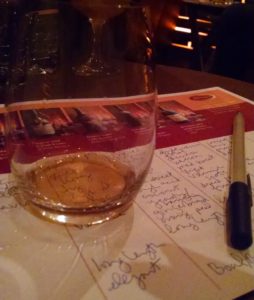 If we are lucky, we live in the present moment, enjoying and savoring the here and now, rather than constantly worrying about the future still to come. Yet, the opportunity to virtually travel back in time, uniting us with the past, can be a special experience. It is why, at least in part, we visit historic places and hold onto souvenirs imbued with memories from time gone by. Most mementos are a tangible, but fleeting glimpse, crumbling with the passage of years. For most things, we rely on museums to carefully preserve the past under lock and key and precise storage conditions.
If we are lucky, we live in the present moment, enjoying and savoring the here and now, rather than constantly worrying about the future still to come. Yet, the opportunity to virtually travel back in time, uniting us with the past, can be a special experience. It is why, at least in part, we visit historic places and hold onto souvenirs imbued with memories from time gone by. Most mementos are a tangible, but fleeting glimpse, crumbling with the passage of years. For most things, we rely on museums to carefully preserve the past under lock and key and precise storage conditions.


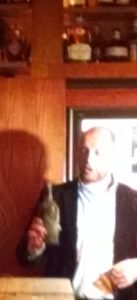
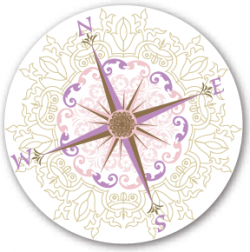


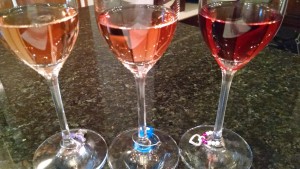
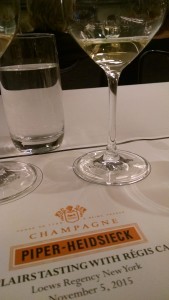
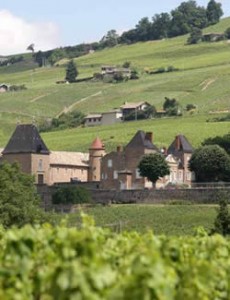
 the forest. After walking for awhile, she came upon a house. She knocked and, when no one answered, she walked right in.
the forest. After walking for awhile, she came upon a house. She knocked and, when no one answered, she walked right in.